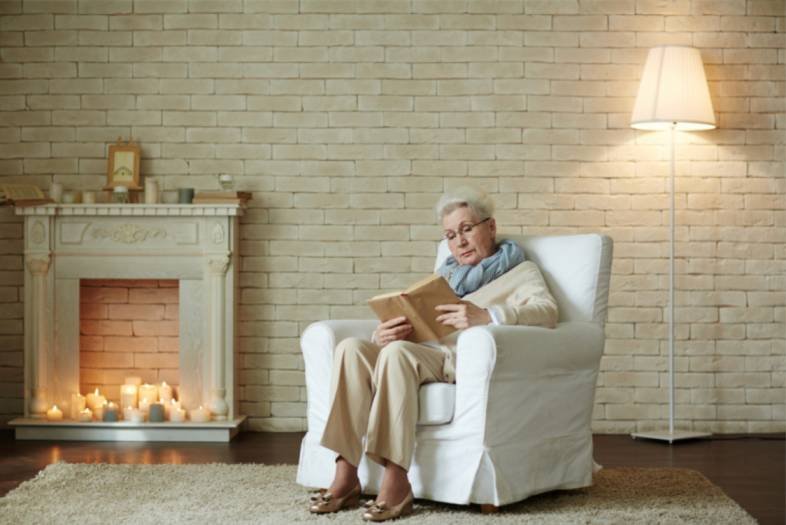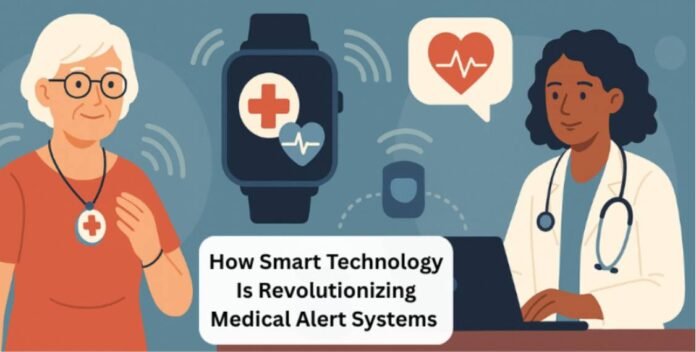How Smart Technology Is Revolutionizing Medical Alert Systems
Imagine this: you’re home alone and suddenly get dizzy. You try to grab your phone, but it’s out of reach.
What if assistance could reach your doorstep with a voice or a command by an automatic alert using a little device on your wrist?
Sounds sci-fi?
Not anymore—it’s already available. Smart technology today is revolutionizing the way emergency response systems work, providing peace of mind to millions of homes.
Whether you are an aging individual who wants to stay independent or a family caregiver caring for a loved one, such technologies are revolutionizing the face of care and safety.
From real-time GPS locating to artificial intelligence-enabled fall detection, smart technologies are surpassing old-fashioned panic buttons with smart, responsive systems that anticipate.
Want to know how these technologies are also making life safer, easier, and more connected?
Continue reading to learn how technology is changing what it means to be safe at home and on the go.
1. Smarter Detection with AI and Sensors

Modern medical alert systems are not just call buttons—they are smart companions. Advanced sensors and artificial intelligence can now determine if a fall took place even when the person is unconscious or speechless.
AI algorithms read data from accelerometers and gyroscopes that have been built into wearable devices, distinguishing actual emergencies from normal activity. That means fewer false alarms and faster, more precise response times.
Unlike conventional systems, smart sensors can learn personal patterns and detect irregularities that could signify problems, i.e., missed meals or protracted periods of inactivity. This information is crucial to carers who require accurate data to respond in a timely manner.
Some systems have voice recognition, and people can call for assistance without pressing a button. These capabilities provide added safety for seniors and ease of mind for families.
2. Real-Time GPS and Location Tracking
Modern alert systems aren’t confined to the home anymore. With the addition of GPS, smart devices now allow real-time location tracking, which can help locate you wherever you are.
Whether you’re taking an early morning stroll, running errands, or taking a trip out of town, you can instantly be located if there is an emergency. This is particularly beneficial for those suffering from memory loss, such as Alzheimer’s or dementia.
Caregivers or emergency responders can easily locate and bring someone back if they get lost. Individual family members also receive location information through mobile apps with some systems, having reassurance in the palm of one’s hand.
In addition, GPS technology also enables geo-fencing—that is, creating safe zones and notifying an individual when they are outside of them. This feature provides additional security, particularly for vulnerable persons.
With warning systems based on GPS, safety is no longer confined geographically, and independence becomes more accessible than ever.
3. Voice-Activated Assistance and Smart Home Integration
Voice technology is revolutionizing the way we interact with products, and now it’s revolutionizing emergency care as well. Medical alert systems are smart and can be integrated with voice assistants such as Alexa or Google Home so that patients can call for help with just a few words.
This is a lifesaver for mobility-disabled patients or post-surgery patients who may not be able to find a button. Aside from that, voice-control systems can be integrated with other smart home devices, including lights, thermostats, and doors.
That is to provide even more independence, so people can govern their space without sacrificing safety as the number one concern. To be able to say, “Help, I need assistance,” and connect to a 24/7 monitoring center right away—that is the type of response provided by current systems.
These developments also cut response time and enable an intuitive system that is simpler to use, particularly for the not-so-technical masses. Overall, the outcome is a seamless experience that balances convenience with well-being.
4. Wearable Comfort with Stylish, Discreet Designs
Gone are the days when medical alert devices were bulky and unattractive. Today’s wearables combine style with function, offering sleek designs that look more like fitness trackers or smartwatches than medical devices.
These modern devices blend into daily life without drawing unwanted attention, promoting consistent use and reducing the stigma often associated with traditional alerts.
Despite their stylish exterior, these wearables pack powerful features. From fall detection and heart rate monitoring to two-way communication and GPS tracking, they ensure you’re never truly alone.
Many models are water-resistant, so they can be worn in the shower—a high-risk area for falls. Others offer extended battery life and wireless charging, making daily use easier and more reliable.
By focusing on user-friendly design and advanced functionality, these smart wearables empower users to live life more freely, knowing that help is always just a button—or a movement—away.
5. Seamless Communication with 24/7 Monitoring
At the core of every smart medical alert system is reliable, instant communication. With built-in cellular technology, users are connected to trained professionals 24/7—no landline needed.
In emergencies, two-way voice communication through the device enables responders to assess situations quickly and send help fast. Some systems also notify family or caregivers instantly via text or email, creating a coordinated response.
This level of connectivity ensures that no call for help goes unanswered. Smart technology transforms basic alerts into efficient, personalized support when it matters most.
Conclusion
With smart technology at your side, staying safe has never been easier or more empowering. You no longer need to choose between independence and security; today’s medical alert systems give you both.
From AI-powered detection to voice-activated help, these innovations bring peace of mind to you and your loved ones. Embrace the future of care and stay connected, protected, and confident, wherever life takes you!

